Introduction
I have long been fascinated by 70mm film, which has significant advantages over 120 for medium format photography, even today. It is, in my opinion, a far superior format. Unfortunately, it was mostly a professional format, and amateur use has been limited by less available equipment and (more importantly) a lack of available information. 70mm can seem daunting to someone just starting out (or just curious about), as there has been no central source of information about the format. The best anyone could do up to now is cobble together bits and pieces of information from forums over the years.
This site is a labor of love. My hope is to share my knowledge of the format and help a new generation of photographers discover 70mm and learn all they need to know to acquire equipment and film, shoot it, develop it, and scan it. 70mm is not scary; armed with the right information, it is easier and cheaper to shoot than 120, and can make medium format photography more enjoyable.
I’m not just on a mission to introduce new shooters to the joys of 70mm. I also hope to form something of a community of 70mm shooters. A critical mass will enable us to unlock more developing options, to release new film stocks (yes, we can do that!), and general encouragement and advice. Join us!
Who I Am
All content on this site was written by me, Zach Horton . I’m a professor of media studies at the University of Pittsburgh. I am also the owner/operator of Mercury Works , a boutique camera company. Mercury Works was the first company to utilize 3D printing and other maker technologies to produce custom cameras. The Mercury camera system is the most versatile, modular camera system ever developed. It is compatible with thousands of lenses and all major recording formats from film to digital. Mercury Works is committed to making 70mm photography more accessible and has developed a number of products to that end.
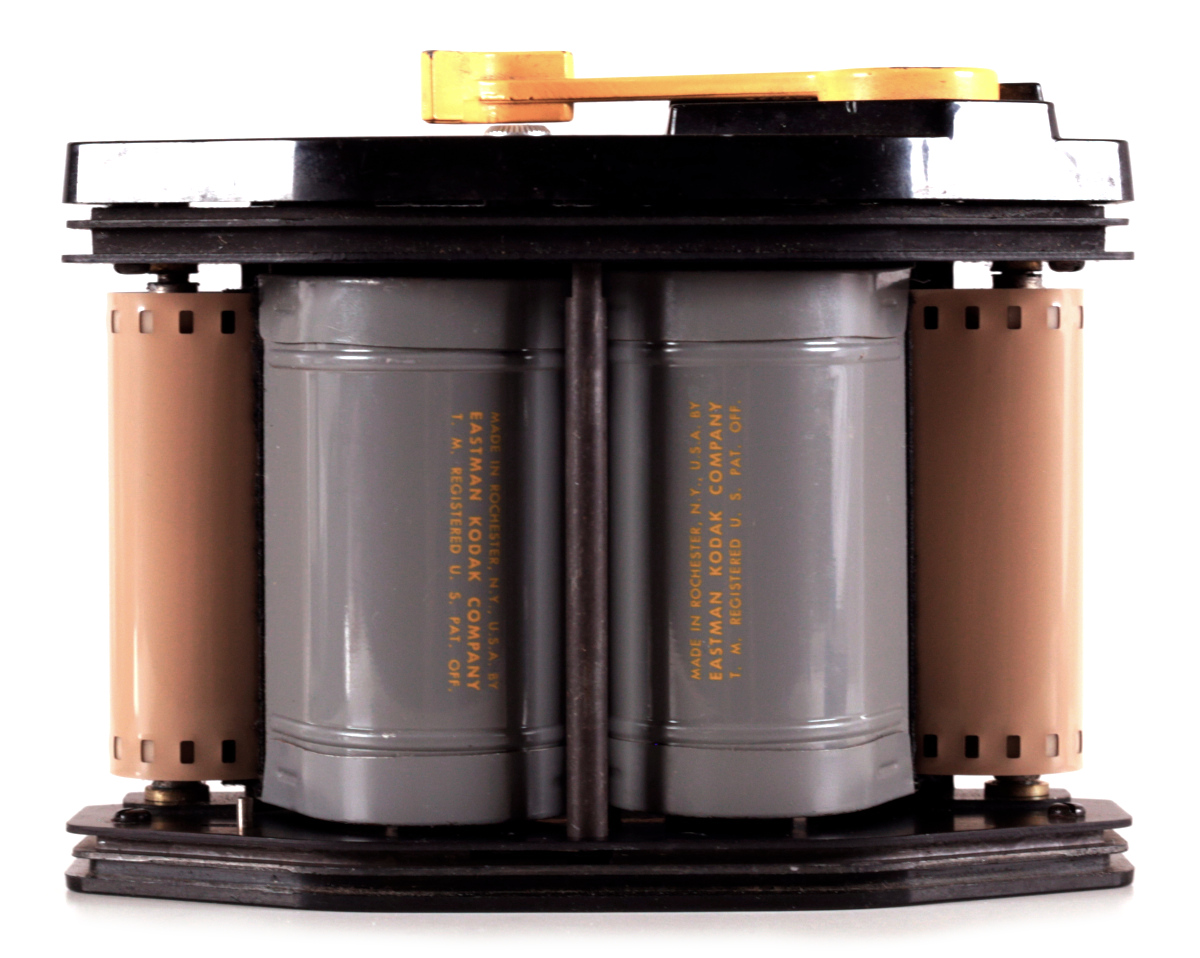
How 70mm Works
70mm is a professional type of medium format film that consists of long rolls of film in a canister. It is 70mm in height, and generally 100ft (30.5 meters) in length.
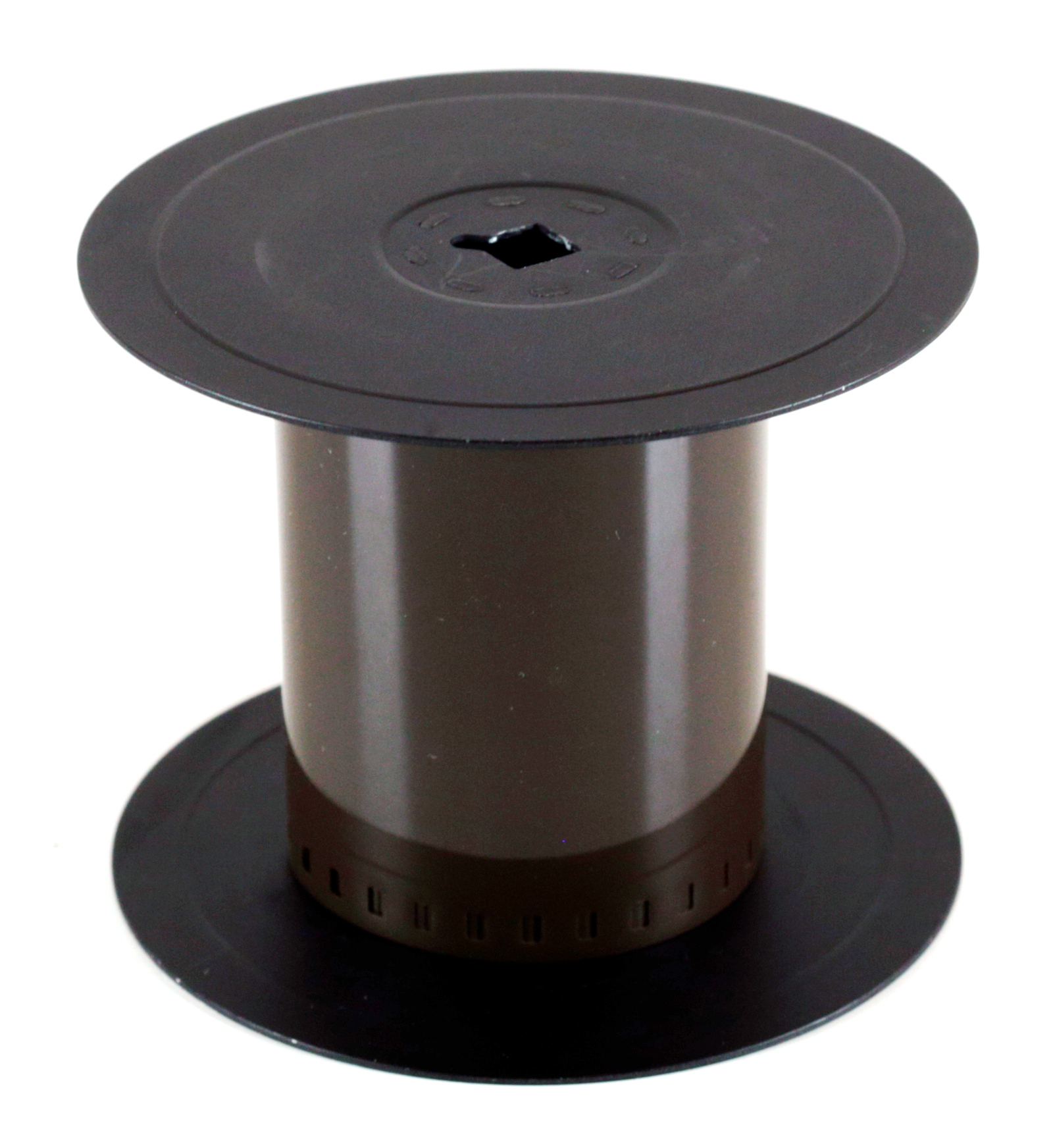
However, 70mm film is usually shot in lengths of 13-15ft loaded into reusable metal cassettes. 70mm cassettes are like giant versions of 135 cassettes, though they are designed to be re-used again and again, not discarded. Each cassette has a cap at each end; you can open it from either end. Inside is cassette spool. Kodak’s version includes a metal film clip to attach film to the spool.
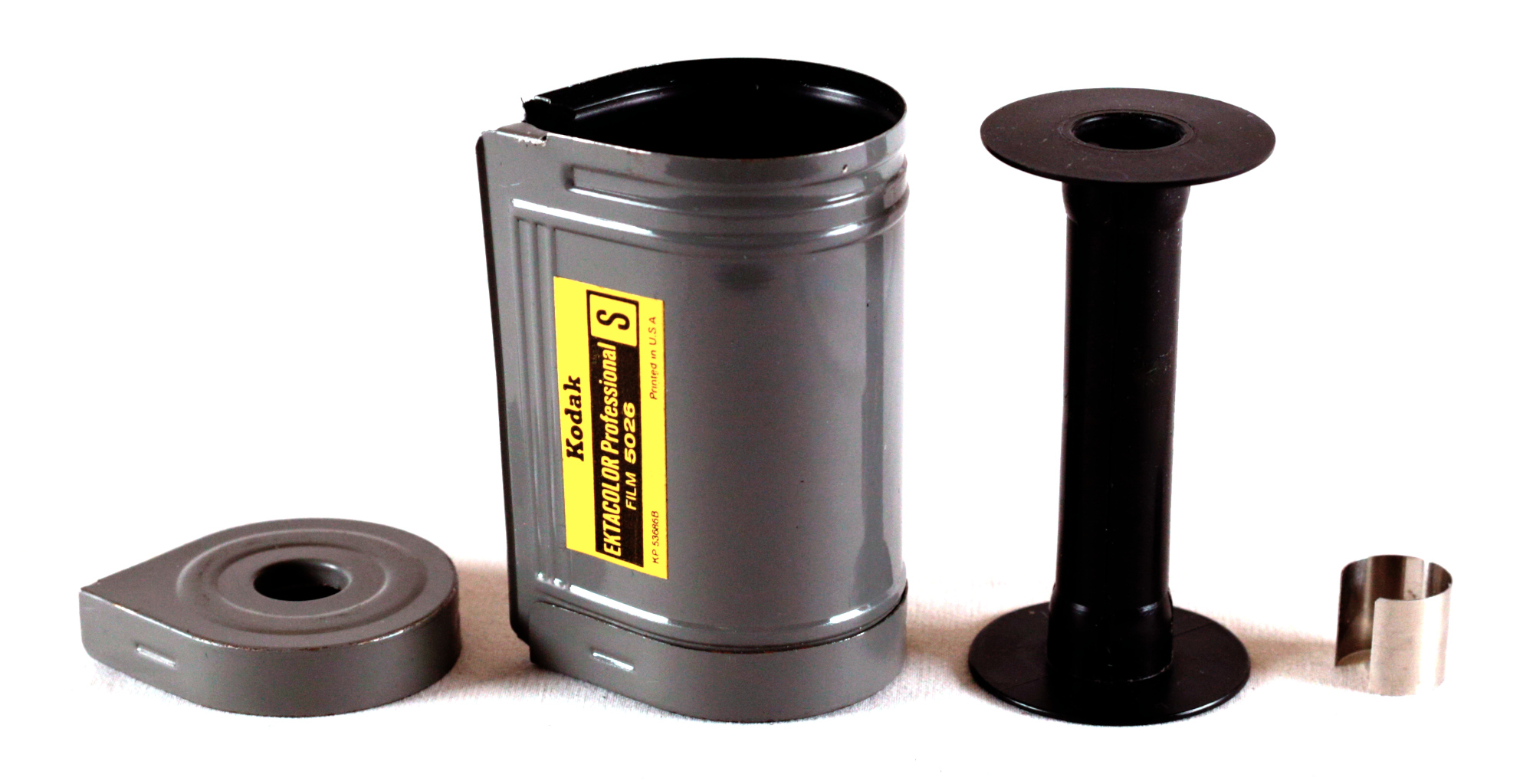
Linhof made their own version of these cassettes. The metal cassette itself was a re-painted and re-branded Kodak cassette, but they designed a different spool to go inside. The Linhof version doesn’t come with a metal clip. Instead it has a slot in which to insert, then bend, the end of your film.
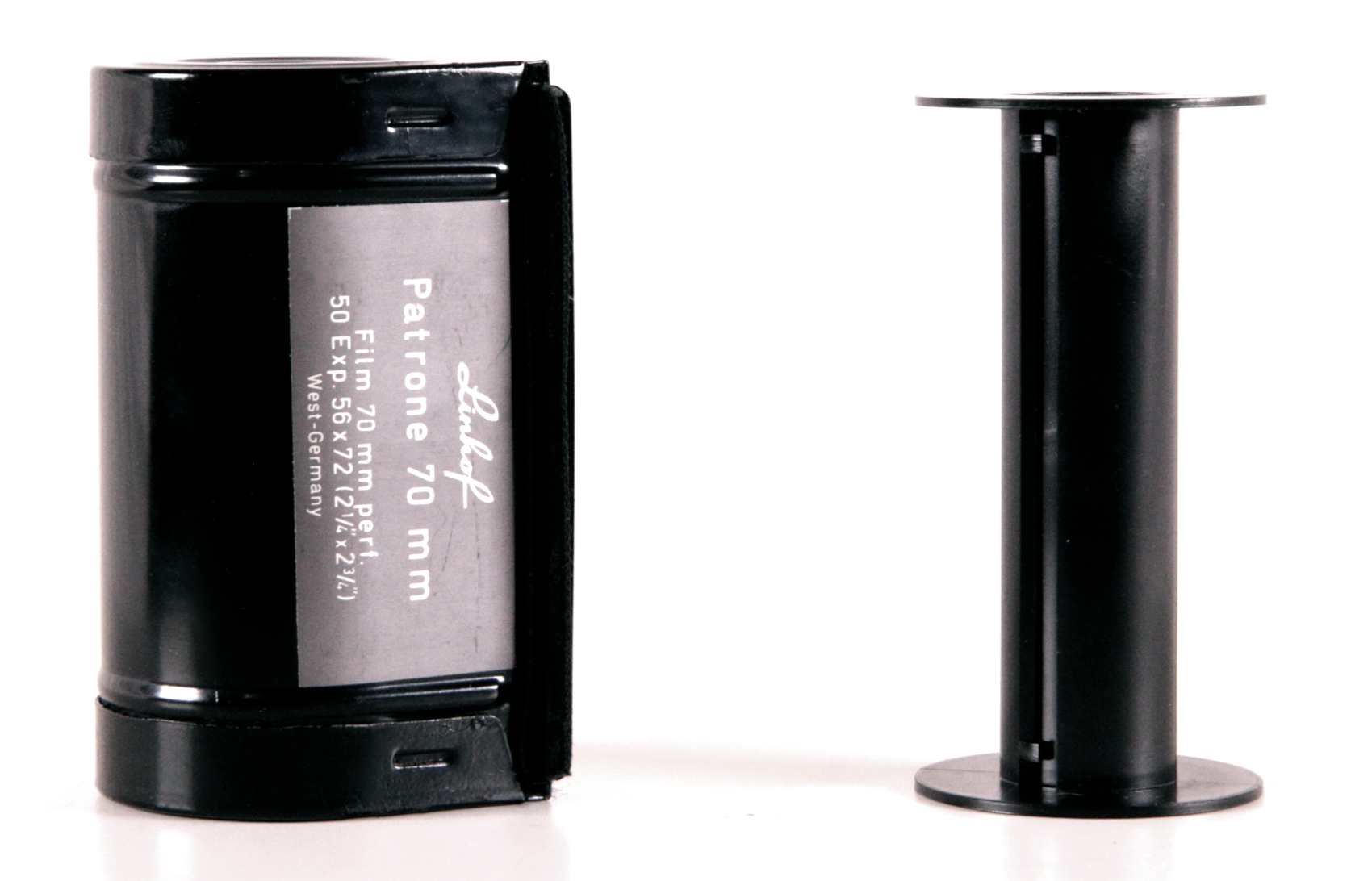
One cassette holds the equivalent of about five rolls of 120 film.
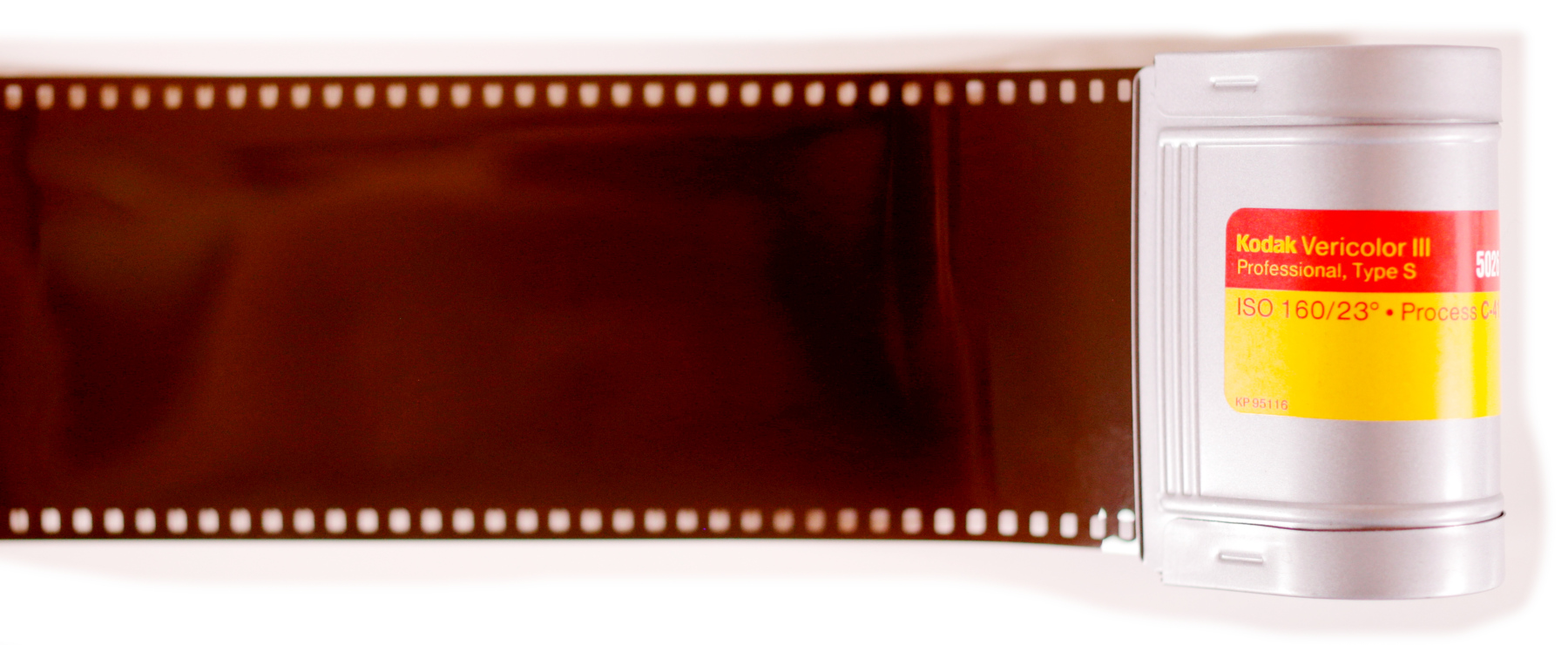
Though the film is a bit larger than 120 film, the extra height was designed for perforations. Even though some 70mm film is perforated and some isn't, all 70mm film is designed to expose standard medium format height photos (approximately 56mm). Theoretically, then, 70mm film is compatible with any medium format camera that accepts removable backs.

Advantages of 70mm Film
The biggest advantage of 70mm is the ability to load larger rolls of film, so you don't have to reload very often. You can shoot five times as many shots per roll as you can with 120 film! There are many situations in which is is extremely advantageous.
In addition, 70mm film is a highly flexible, professional format. You can load as much film in a cassette as you wish: 120 length, 220 length, a full 15ft load, or anything in-between. Even better, the 70mm cassette system enables you to cut a roll short at any time. When you've completed a shoot, simply cut the film. The exposed film can be developed, while the unexposed film can be instantly reloaded into a new takeup cassette to continue shooting, or stored for the future, ready to shoot. See below.
Besides being shot in a traditional 70mm cassette, 70mm film can now be shot on large format and Mercury Stereo cameras in a Mercury 70mm Cut Film Back or a Grafmatic 45.

Nowadays, another massive advantage of 70mm film is cost. While new film from Ilford will cost the same per exposure as 120, there are large supplies of 70mm film from the aerial and portrait industries that are routinely sold on Ebay for 20% to 25% of the cost of new 120 film. See the 70mm Film page for recommended film stocks.
70mm metal film cassettes do a much better job of protecting film from UV light and X-Ray scanners than the paper backing of 120 film. I have had 120 film ruined while 70mm film traveling beside it turned out fine.
A final advantage is that thanks to Mercury Works, it is now possible to shoot 65mm motion picture film (i.e., IMAX film) in all 70mm film backs! See the 65mm Film page for details!
Where to Start
You'll need the following to get started with 70mm:
- A medium format camera that accepts removable backs
- A 70mm back
- At least two 70mm cassettes
- 70mm film
- A 70mm developing reel and tank, or a modified 120 reel for Paterson or Jobo
- If shooting 65mm, a set of Mercury 65mm spools (which insert in 70mm cassettes)
Mercury Works offers most of the essential items, as well as an extensive line of accessories, and the world's most complete supply of film, here.
Ebay is also your friend for vintage 70mm gear.
If you already own a compatible camera system, that's probably the best place to start.
If you are looking for a new camera specifically for 65/70mm, we recommend either a Hasselblad V camera (A70 backs are quite plentiful), or more affordably, a medium format camera that is compatible with the Mamiya RB67 70mm back (A Mercury Universal Medium Format camera for portable use or an RB67 for studio use), or a large format camera that uses the Graflok 45 back mount (the most common removable back system). To get the most out of a large format camera, you may want a panoramic 65/70mm back, made only by Mercury Works (see the Backs page for details).
Join the Mailing List!
Are you currently a 70mm shooter who would like to join a community of others to share information and learn about new releases of equipment and film? Or are you considering shooting 70mm and would like to know more?
Join the list via this form. Depending on the options you select, you'll receive infrequent emails from us with news about future guides, tips, processes, and social media gatherings related to your particular preferences. We will never spam you or share your information with a third party.